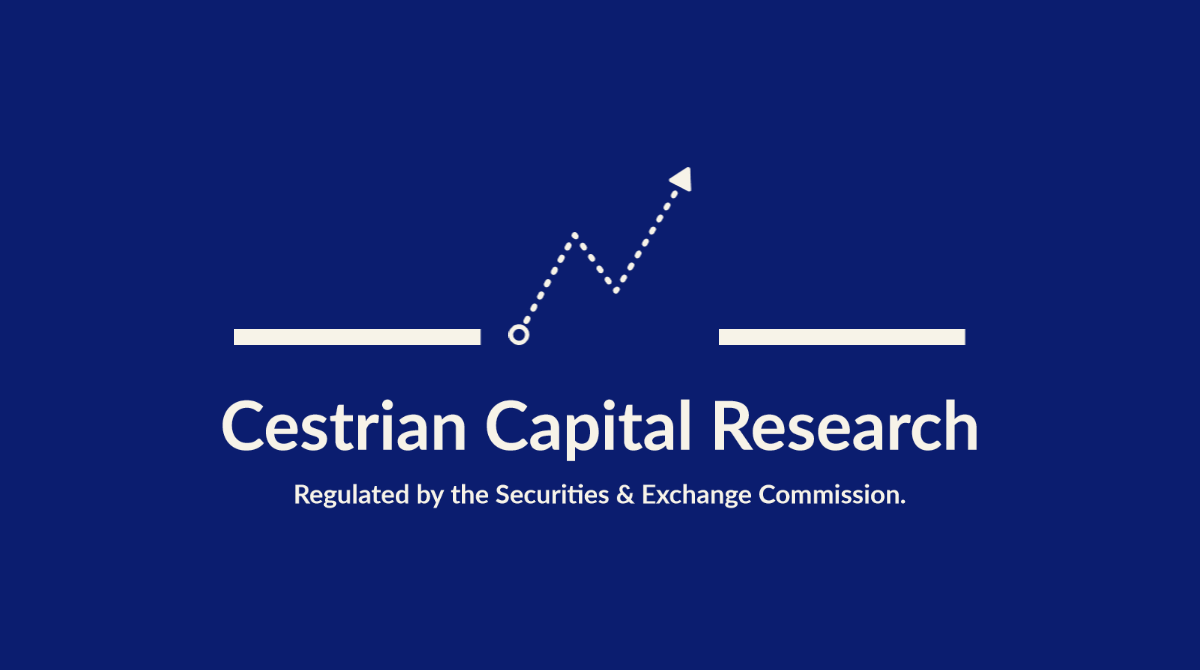RIA: Rotation - Semiconductor

DISCLAIMER: This note is intended for US recipients only and, in particular, is not directed at, nor intended to be relied upon by any UK recipients. Any information or analysis in this note is not an offer to sell or the solicitation of an offer to buy any securities. Nothing in this note is intended to be investment advice and nor should it be relied upon to make investment decisions. Cestrian Capital Research, Inc., its employees, agents or affiliates, including the author of this note, or related persons, may have a position in any stocks, security, or financial instrument referenced in this note. Any opinions, analyses, or probabilities expressed in this note are those of the author as of the note's date of publication and are subject to change without notice. Companies referenced in this note or their employees or affiliates may be customers of Cestrian Capital Research, Inc. Cestrian Capital Research, Inc. values both its independence and transparency and does not believe that this presents a material potential conflict of interest or impacts the content of its research or publications.
The Essence Of Rotation
Successful sector rotation means taking advantage of the Wyckoff Cycle method. Put simply this schema is:
- Security moving sideways at the lows at high volume - accumulation
- Security moving up at low volume - markup
- Security moving sideways at the highs at high volume - distribution
- Security moving down at low volume - markdown.
Whilst no system is perfect, using Wyckoff Cycle analysis - using price and price x volume - is a way of following the breadcrumb trail left by the largest asset managers. If you manage truly huge sums of capital, you can't buy quietly in one rapid raid, because you will move the market. You have no choice but to buy slowly and over time; to sit back in anticipation of a runup in price; and then to sell slowly and over time; and the contrail that leaves is the Wyckoff Cycle.
The price-setters in Wyckoff are the largest asset managers. The price-takers are everyone else. But if you are prepared to follow just a little behind the majors, which seems to me to be inherently less risky than trying to guess what the majors will buy or sell next, then this contrail, the breadcrumbs, can help you ride the same price waves created by majors without having to wield those huge sums.
I think the rotation method is particularly well suited to RIAs investing client capital. Executed well, it means that you can own only high quality stocks or ETFs - easy to explain to clients why their capital has been placed in these names - but you can use timing to buy and sell judiciously. The feedback we hear from those of our RIA subscribers who have employed these methods successfully is that their clients have greatly appreciated the outcomes. In short the goal is - own only high quality issuers, no overly risky names; own only common stocks or ETFs, no overly risky structures; but identify Big Money breadcrumb trails to work out when to buy and sell in a timely manner.
The rotation method is not like momentum investing. Either method can work. Momentum investing means try to catch a stock or ETF on an upward breakout; hold for as long as price is moving up, and jump off the train when it is slowing but before it comes to a halt. Rotation means take your time to build a position, use risk management methods like stop-losses to control your downside exposure (in case you mistake accumulation for distribution - easily done as both are sideways, rangebound patterns), then sit back and wait for that breakout - then sell over time once the cycle looks to be topping.
Momentum investing means buy high and sell higher - buy the hot names and sell them just as they start to cool off. Rotation means buy the out of favor names, wait, and if they come back into favor, sell just as everyone is declaring them the best stocks or ETFs known to humankind (the usual kind of bull market euphoria).
And with that in mind, today I want to talk about semiconductor.
